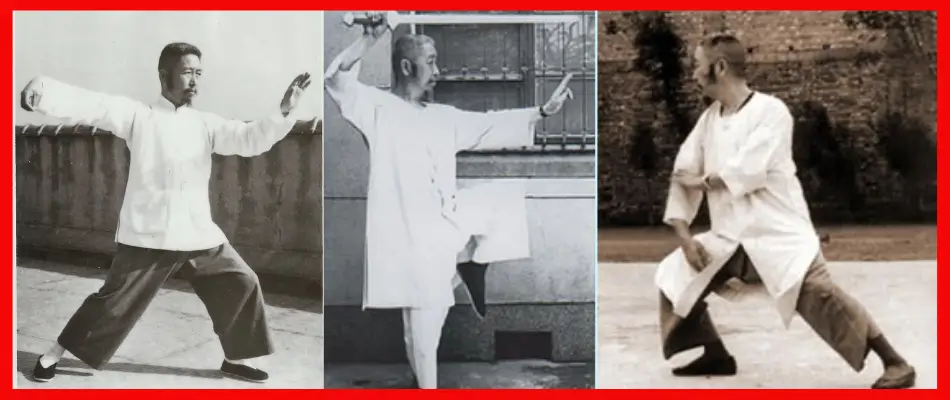How did the work of a single tai chi practitioner, albeit master of Yang tai chi, lead to the foundation of hundreds of tai chi schools throughout the world and over 10,000 students practicing his form outside of China? To answer this question, we need to dive into the history of one of the most talented modern practitioners and the development of Cheng Man Ching Tai Chi.
Cheng Man Ching Tai Chi is a modified form of Yang Style tai chi founded by Cheng Man-ch’ing, an expert in tai chi, medicine, painting, poetry, and calligraphy. This style is distinguishable for its medium-height poses, relaxed hand and arm postures, and absence of repetitive movements.
Cheng’s legacy introduced tai chi to more people outside of China than any other practitioner before or since. Whether you study this specific style or any form of tai chi, what we get from learning about Cheng is to see how learning tai chi can be applied to and positively affect every area of our lives. And the best part? He lived until 1975 so we have videos of HIM doing the form, several authored books, a documentary, and direct disciples who continue to teach.
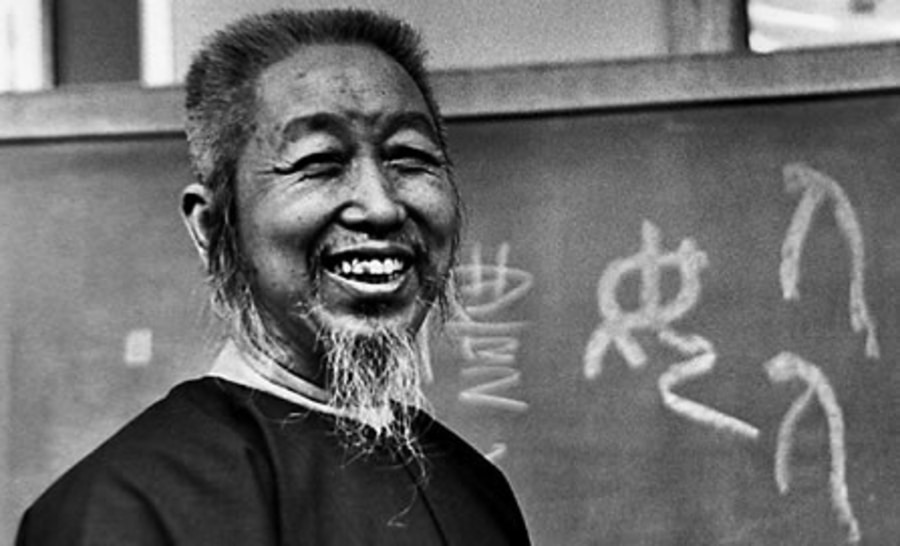
The History of Cheng Man Ching
To know about the art of Cheng Man Ching Style Tai Chi is to know about the man himself. What we see ultimately is that a man was introduced to tai chi and developed it to such a high art that he convinced dozens to teach and tens of thousands to practice. What we need to understand is:
- The intelligence and mastery of so many subjects that he already had prior to starting tai chi that enabled him to be accepted as a student and develop his own art to such a high level.
- What motivated him to dedicate several years to intense study.
- What lead him to spend the second half of his life spreading the art.
Let’s take a walk through his life to find out how his success was possible and then head into the tai chi forms and art he developed. Grand Master Cheng Man-Ch’ing was born in southeastern China in 1901. His father suffered an early death and Cheng was sent to work for a local artist and also received tutelage under an aunt who painted. At the same time, his mother was purported to introduce Cheng to using herbs and plants as medicine. What we know about Cheng from both the positions he held and the people he helped, is that by age 19 his art developed to such a high degree that he taught poetry at an art institute in Beijing and was also a well-known artist in the community. He wrote medicinal scripts for acquaintances who were sick which resulted in complete recovery.
1920s – 1940s: Cheng Man Ching in China
Cheng fell ill with tuberculosis and withdrew from the art community to study medicine and practice tai chi. His medical reputation grew and he successfully treated the wife of Yang style master Yang Cheng Fu who took Cheng Man Ching on as an in-door student. He studied under Yang for 6-7 years until Yang’s death in 1936. Like much of the population, Cheng fled to Central China during the war with Japan, continued to study, practice, and teach. He left the country for Taiwan in 1949.
1949-1964: Cheng Man Ching in Taiwan
1950 was a big year for Cheng Man Ching and also for tai chi. He opened a school for tai chi where he not only taught “outsiders” but also published one of the first treatises on tai chi that would be translated into foreign languages, the 13 Chapters of Tai Chi Boxing. Cheng began altering the traditional Yang form that he learned based on his understanding of art, medicine, in-depth study of the i-Ching, and the tai chi classics. Cheng also had vast abilities as a teacher which led to several students reaching a high level of proficiency.
This is an important infection point in his life and also the spread of tai chi. The question exists:
Why did Cheng alter the original Yang form and teach something different?
While the exact answer isn’t known, what is clear is that overcoming his own health challenges with medical knowledge and tai chi brought him to a place where he felt the art had to be shared. He committed his life to doing just that. Secondly, there is something about his professional teaching abilities that led him to believe that there might be a better way to teach it. This is evidenced by the vast number of students who became incredible proficient at tai chi. His early students, Chinese, and non-Chinese, are still counted as some of the best. Thirdly, he believed that the essence of tai chi and health benefits could be achieved in fewer movements. He experimented with different forms and developed the 37 Movement Form which he carried with him to the United States.
1964-1974: Cheng Man Ching in the United States
Cheng Man Ching moved with his wife and three children to New York City and began teaching in Chinatown. In this next and last period in his life we see dozens more students learning tai chi and opening schools throughout the world. We see the publication of over 10 books, videos, recorded lectures, and art. We see the continued development of his style and the cementing of Cheng Man Ching Tai Chi as a modern global addition like the other main styles of tai chi.
1974-1975: Cheng Man Ching Returns to Taipei, Taiwan
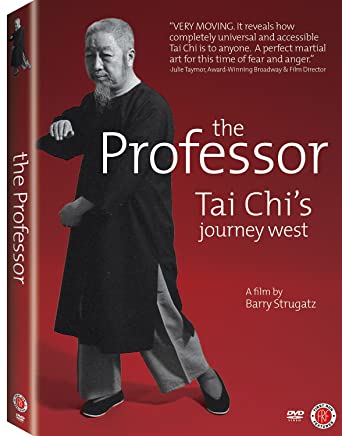
In 1974 Cheng retuned to Taiwan as he worked on the publication of a very lengthy commentary on The Book of Changes. Some initial uncertainty surrounded Cheng Man Ching’s cause of death but he was reported to have passed away in his study on March 26th, 1975.
The Professor Cheng Man Ching
If you are as fascinated with his life story as I was and want more information you are in luck! Having a teacher of his caliber live in such recent times means that so many videos, interviews, lectures, notes, and publications exist. In 2016, a group produced a documentary called The Professor Cheng Man Ching – Tai Chi’s Journey West that tells the story of his life. It is a really unique thing in the world of martial arts to be able to see the places he lived and trained, meet the people who knew him, and even see him teach and practice the form.
Cheng Man Ching Tai Chi
Cheng Man Ching Tai Chi comprises a single open hand form with 37 movements, a sword form, push hands or partner work, and extensive philosophical study to unite mental and physical practice. There is some confusion about whether there is a Cheng Man Ching long form or short form. In essence, the 37 movement form is the longest Cheng Man Ching tai chi form. On the other hand, it is much shorter than the Yang style 108 that Cheng learned, therefore it is also referred to as the short form. Cheng himself saw no value in the long-short debate. He himself referred it as “Yang Style Tai Chi in 37 Movements.”
What are the difference between Yang and Cheng Man Ching Styles?
Despite learning Yang style tai chi from Yang Cheng Fu, the Cheng Man Ching 37 posture form is identifiably different than what Yang stylists practice.
- There are 71 less movements (taking about half as long to complete)
- The form has very little repetition
- The arm and hand movements are much smaller and more relaxed at the joints
- The stepping distance is conservative
- The stance is not only higher but stays at the same “middle-height” for most of the form
- There is a clear connection between moves where one move continues into the next rather than having independent postures and pauses.
Controversy over the differences between Yang Style vs. Cheng Man Ching Tai Chi
There is some controversy (like every good tai chi story!) because Cheng Man Ching tai chi forms have never been recognized by Yang family masters as being an official form. Herein lies the problem: His master Yang Cheng Fu, gave Cheng special permission to create a short form to more quickly teach the military during World War II and after. It was also intended to increase the number of practitioners of tai chi so that more citizens could reap the health benefits. this is a stated goal of all Yang style teachers who have created shorter forms. Both happened and are true. At the same time, it is not an official Yang Style form.
Supporters of Yang style share that it is too much of a deviation from the original teachings to be considered a Yang style form. They consider it a reduction of concepts rather than an enhancement of concepts like what Wu, Wu Hao, and Sun did to contribute to the art, warranting the acknowledged creation of a new style.
Supporters of Cheng style share that the same benefits, both martial and health, are obtained by practicing Cheng Man Ching tai chi. Also, that this style adheres to all tai chi principles and has done, some would say, an even better job spreading tai chi, making it accessible to all types of practitioners, and teaching tai chi philosophy along the way.
Cheng Man Ching 37 Posture Form
Let’s take a look at some videos! Here’s where it gets easy. If you search YouTube for Cheng Man Ching Long Form or Cheng Man Ching Short Form, you will end up in the same place. The 37 posture form is the form you want to be working on and learning.
There is a “short half” of the form which is at posture 16 and marks the point where half of the different movements have been performed. To say that the “Cheng Man Ching Tai Chi 37 Step Form has no repetitions” is a bit of an overstatement. Moves like Brush Knee and Twist and Repulse Monkey do occur more than once. However, they are positioned strategically to sew the form together or to practice the move with both sides of the body.
Cheng Man Ching Tai Chi The 37 Step Form
Postures of the Cheng Man-Ching Tai Chi Form
| 1. Preparation 2. Beginning 3. Ward Off, Left 4. Ward Off, Right 5. Roll Back 6. Press 7. Push 8. Single Whip 9. Lift Hands 10. Shoulder Strike 11. White Crane Spreads Wings 12. Brush Knee, Left 13. Play the Lute | 14. Step Forward, Deflect Downward, Parry, and Punch 15. Withdraw and Push 16. Cross Hands 17. Embrace Tiger, Return to Mountain 18. Fist Under Elbow 19. Repulse Monkey, Right 20. Repulse Monkey, Left 21. Diagonal Flying 22. Wave Hands Like Clouds, Left 23. Wave Hands Like Clouds, Right 24. Snake Creeps Down | 25. Golden Rooster Stands on One Leg, Right 26. Golden Rooster Stands on One Leg, Left 27. Separate Right Foot 28. Separate Left Foot 29. Turn Body and Kick with Heel 30. Brush Knee, Right 31. Step Forward and Punch low 32. Fair Lady Works the Shuttle I 33. Fair Lady Works the Shuttle II 34. Step Up to Seven Stars 35. Retreat to Ride Tiger 36. Turn Body Sweep Lotus Leg 37. Bend Bow Shoot Tiger |
The Tai Chi Sword Form of Cheng Man Ching
We have videos of Cheng Man Ching performing the sword form and videos of him teaching sword class. In this tai chi sword form, Cheng Man Ching performs in the characteristic upright, posture with a great deal of similarity to the form taught by his teacher Yang Cheng Fu.
CMC Performing the Tai Chi Sword Form
Cheng Teaching Sword Class
Cheng Man Ching Push Hands
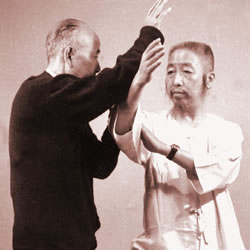
For Cheng Man Ching, push hands training was a huge part of the curriculum because it enables a student to test their posture, balance, stance, and measure their ability to remain relaxed and present in the face of chance or conflict.
I want to share three videos here to demonstrate the breadth of Cheng Man Ching’s push hand abilities as 1) a professional teacher, 2) in demonstrating martial skill, and 3) in relating the practice back to internal development. In this first video we see him teaching push hands without a single break to his posture. This in turn makes the student shine. The video quality of the second video is not great but this means it is original and we can still make out the power of his martial skill. The last video is a rare interview which captures Cheng talking about the difficulty building up enough energy (chi) to get past the base of the skull (Jade Pillow) so that energy can freely flow down the front of the body (microcosmic orbit). This demonstrates is medical and internal knowledge which he used push hands to test and practice.
Cheng Teaching Push Hands
Cheng Man Ching Push Hands Martial Force
Rare Interview with Cheng Discussion on Chi Movement
Cheng Man Ching Books, Videos, Documentaries and Other Resources
Wow! My jealousy of all CMC practitioners runnith over. You have books! You have videos! You have lectures! You have English-speaking students of his who continue to teach! The good news is that we don’t have to practice this specific style to benefit from his teachings. I have included the Cheng Man Ching books that continue to be be in circulation. There is also a pretty good Chen Man Ching short form video for you to brush up on your skills or start learning his style.
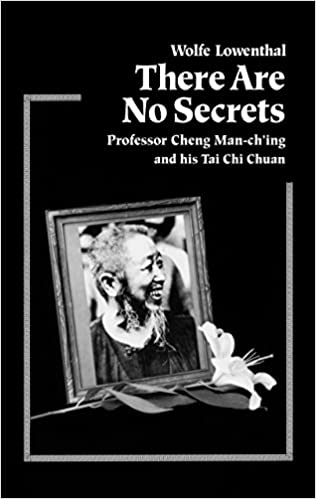
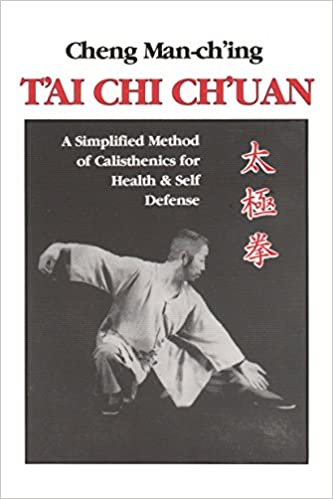
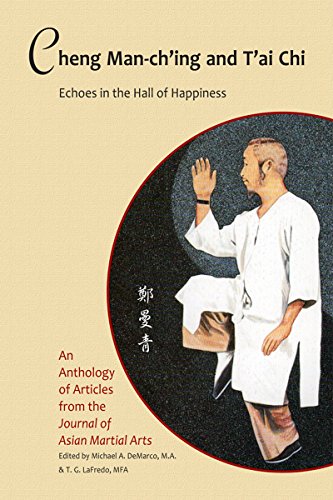
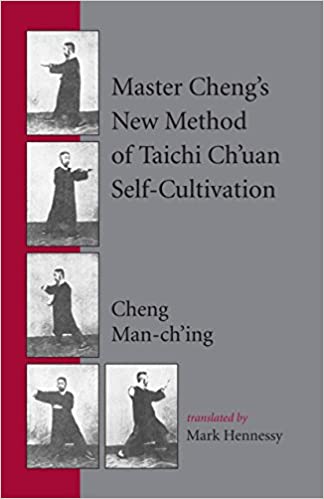
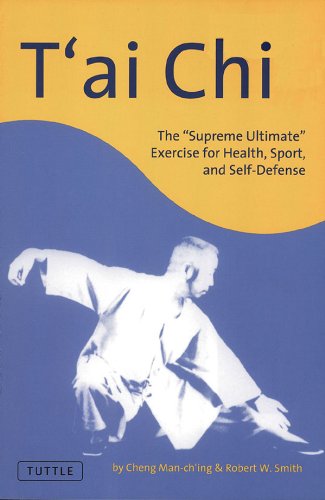
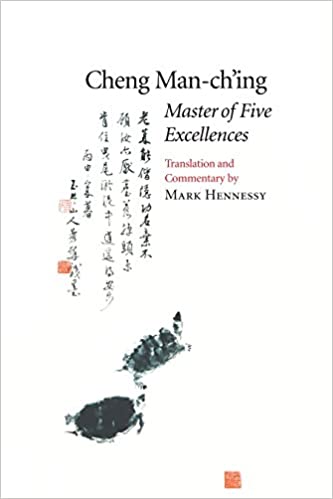
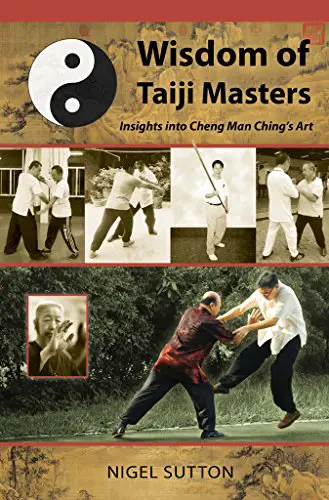
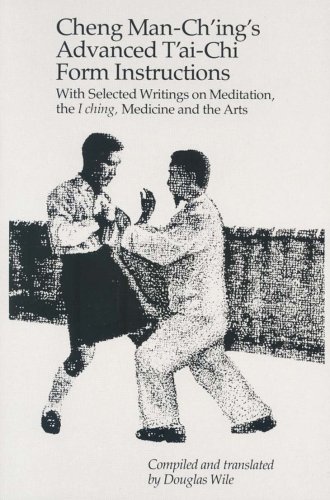
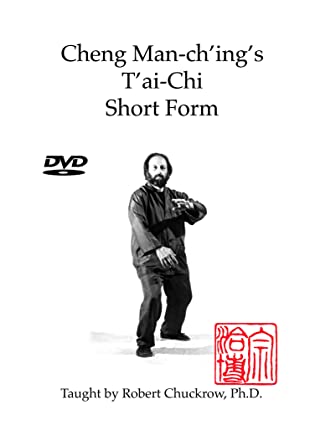
Cheng Man Ching Quotes
Because of the multitude of amazing resources that exist and the fact that he was a poet, we have been left with many inspiring Cheng Man Ching quotes.
Use the mind to direct the chi and the chi to mobilize the body.
Cheng Man Ching quote on training.
Deep and deeper sufferings make higher and higher persons.
Cheng Man Ching quote on acceptance and perseverance.
When you initiate an ill-intentioned move, it comes back on you.
Cheng Man Ching quote on push hands with a broader implication for life.
When you finally reach the place where you understand what life is about, you’ll have the health to enjoy it.
Cheng Man Ching quote on health.
Pity! The southerly trees have shed their leaves. Nobody comes to appreciate the mountain’s beauty. Tomorrow I too will float away. My reflection gone from cool streams.
Cheng Man Ching quote on the temporary nature of living.
An Overview the Main Tai Chi Styles
This is part of a series of articles that we wrote on all the most popular styles of tai chi. Keep reading in that direction or find out how to improve your tai chi form.


